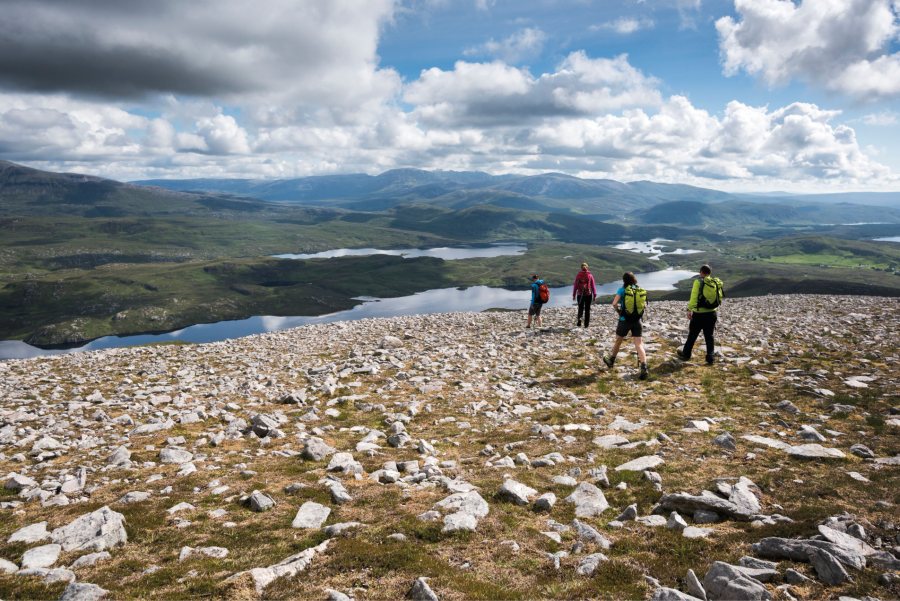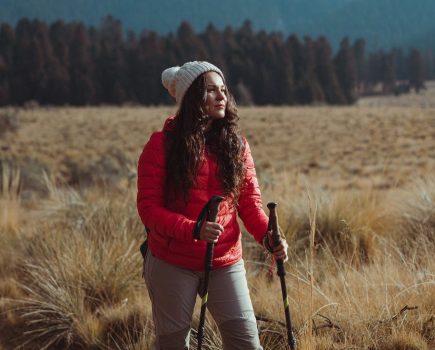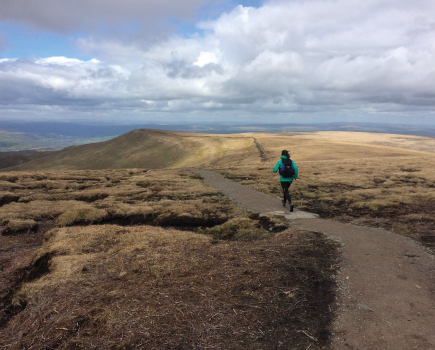International Mountain Leader Fiona Chappell has been guiding groups into the Cairngorms for nearly two decades. Here she outlines what she has come to understand about our ever-fickle summer mountain weather during her time as a Glenmore Lodge Instructor delivering Hill and Mountain Skills courses throughout the warmer months.
Over the summer months, we can experience a variety of weather on the hills and mountains-sometimes all ina single day! It’s not unheard of to wake after a summer’s night under the starsto hailstones collecting at the base of your tent. Gaining information from the weather forecast in preparation for a journey is the key to asale and enjoyable outing.
Main image: Cloud gazing in Assynt | Credit: Ed Smith
This article is sponsored by our friends at Glenmore Lodge.
WHICH WEATHER FORECAST?
Looking at different weather forecasts, especially the mountain related ones, is essential. Whilst the forecasts may all give the same overall picture, there may be timing differences. Taking note of and understanding these possible changes means we can plan accordingly and build in flexibility to our route, as well as anticipate the appropriate kit needed to deal with the expected conditions.
The Met Office (metoffice.gov.uk) provides a weather forecast for the mountainous regions of the UK from the North West Highlands of Scotland south to Bannau Brycheiniog/Brecon Beacons. Summit specific forecasts give greater detail hour-by-hour and these are available for many major peaks.
Useful weather insights are also provided by the Mountain Weather Information Service (mwis.org.uk) covering similar mountain regions of the UK and offering forecasts at 900m elevation. This is vital during the summer months during which the day appears bright and sunny from the valleys and glens, but can feel decidedly different on the tops.
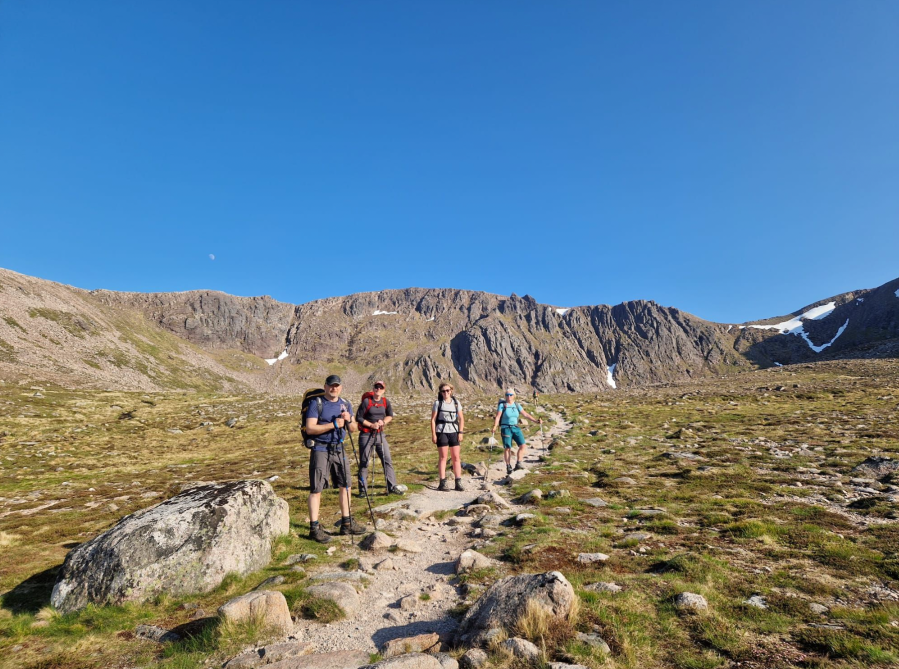
Conditions atop Coire an-t Sneachda aren’t always reflected on the lower slopes. Credit: Glenmore Lodge
There are many more weather forecasts – Meteo Blue, Windy, Accuweather to name a few – with hiking apps available for download so we can have ready access to the most up-to-date information to help us route plan and pack accordingly. The key features of the forecast that are important to consider are wind speed and direction, precipitation, temperature, cloud cover, sunshine and visibility.
BLOWIN’ IN THE WIND
The wind, both direction and speed, can have a significant impact on hillwalkers and our safety. Wind speeds from 30-40mph can affect our balance, whilst speeds of over 40mph have the potential to blow a person off their feet. Speeds of above 60mph would make moving about safely seriously challenging Wind gusts (also forecast alongside wind speed on reliable sources of mountain weather) can make mobility difficult.
They are unpredictable and can cause stumbles, especially when moving aver uneven terrain such as boulder fields. Wind is funnelled around cols or bealachs. Here, conditions may feel windier than expected. Taking note of the direction the wind is forecast to blow from should influence route choice. In manageable wind speeds, it’s wise to aim to walk with the wind blowing at our backs as walking into the wind can be more strenuous.
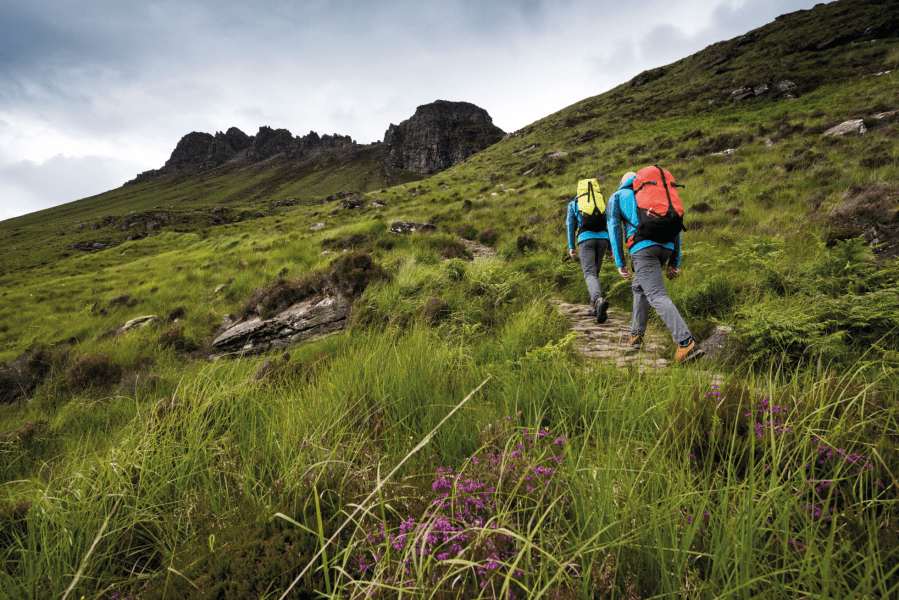
Pack light but wise with plenty to drink throughout summer. Credit: Ed Smith
CLOUD GAZING
Precipitation can mean anything from drizzle to persistent heavy rain. Even in summer, it is not unknown for there to be snow showers on the highest tops on a cold day. Packing the waterproofs and putting them on as appropriate will help to keep us dry and comfortable. Good footwear that keeps the feet dry and comfortable is essential especially if our route takes us over boggy ground.
Keeping your eyes to the skies and understanding the basics of cloud formations may help you anticipate changes in weather and re-route if needed. Throughout the summer months, when warmer air can rapidly rise and condense, Cumulus clouds can develop very quickly. A sky full of differently-shaped clouds at different heights indicates an unsettled atmosphere and could spell rain.
Growing and darkening clouds are also indicators. Large, darker clouds with anvil-shaped tops (cumulonimbus) can indicate a risk of heavy rain, hail and perhaps lightning-so be on the lookout for these.
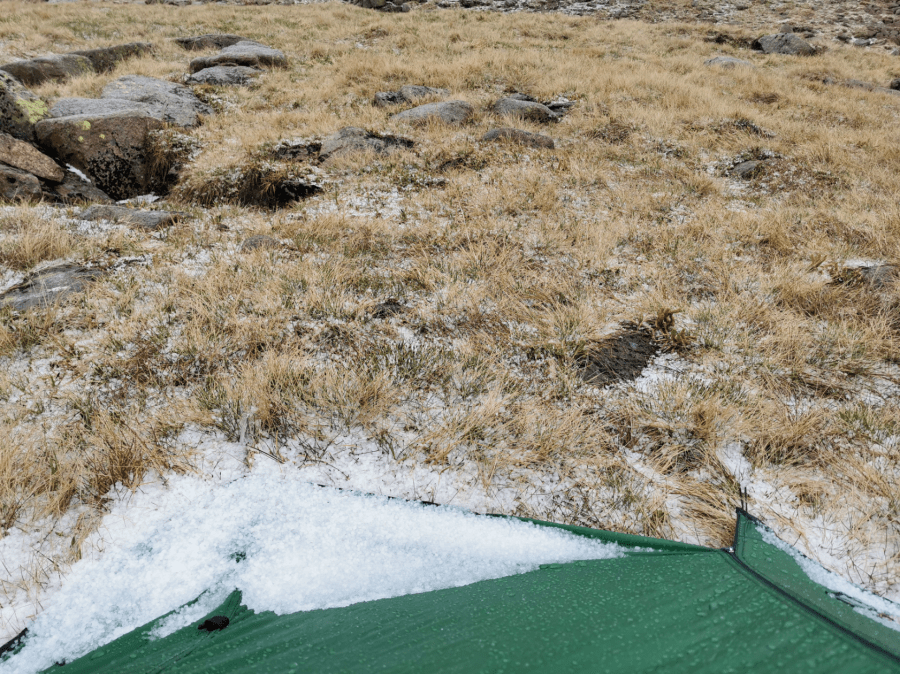
Hailstones in June. Credit: Fi Chappell
Heavy rain can also cause the level of waters in streams to rise. The river crossing that has been slow and gentle can quickly turn into a torrent after heavy rain. Moreover, cloud, mist and fog can all reduce visibility.
If you anticipate low visibility, ensure your navigation skills are up to scratch-or change your route. This could mean choosing a route along which navigation is straightforward instead of open, featureless terrain where the navigation will be more challenging.
TOUCH OF THE SUN
Sun is always good to see in a forecast- a rare treat, it sometimes feels! But sun is also sometimes underestimated by hillwalkers. Be prepared with sun cream to avoid sunburn in the thinner atmosphere at elevation. Also wear sunglasses and a sun hat. Carrying adequate liquid – more than you would, perhaps, in cooler climes.
Always know what you’re heading into, even in summer. To stay hydrated is important on long days. Heatstroke is a very real possibility if you don’t take preventative steps on the exposed and treeless tops of Britain’s mountains.
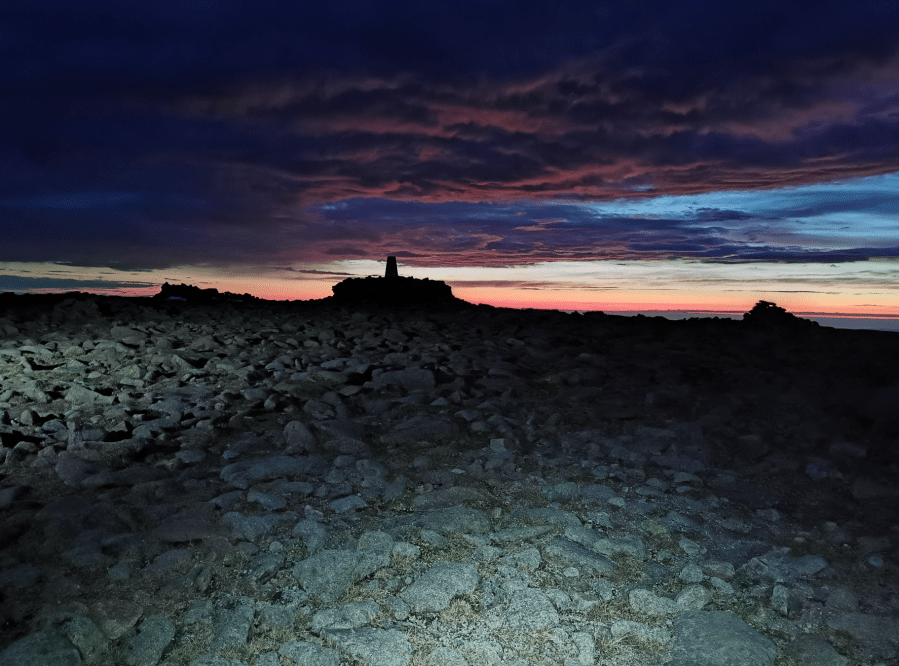
A summer sunset over Ben Macdui. Credit: Fi Chappell
TEMPERATURE GAUGE
On the tops, temperatures can be significantly less than in the valleys and glens. For every 300 metres of height gain, the temperature drops by approximately 2 degrees Celcius; so whilst it may be warm low down, it can be chilly on the tops. Forecasts also give the wind chill or an indication of what the temperature will actually feel like.
The wind affects our perception of the air temperature as it speeds up the evaporation of moisture from any exposed skin, causing cooling, On a hot day a light breeze can be pleasant. On a cool day, the wind chill will be more noticeable. Pack spare warm and windproof layers.
Looking at the forecasts enables us to prepare and anticipate the conditions we will experience; but forecasts are, after all, simply predictions of what is most likely to happen with the weather. At times, the weather can differ from the forecast, being wetter, windier or even, to our benefit, drier and brighter. On a winter mountain day. mountaineers and hillwalkers do well to be prepared for cold conditions-or suffer the consequences. But during the changeable summer months, good route planning, appropriate clothing, footwear and good navigation skills are still essential in creating a safe and enjoyable day out.
Glenmore Lodge is sportscotland’s National Outdoor Training Centre. Based near Aviemore in the Cairngorms National Park and founded in 1948, it exists to support individuals to access the outdoors safely and responsibly through providing skills training and inspiring adventure. Whether it’s trying a new way to enjoy the outdoors, aguided adventure, or professional experienced Instructors are ready to support everyone to develop their skills and achieve their aspirations in the outdoors.
Learn more at glenmorelodge.org.uk

